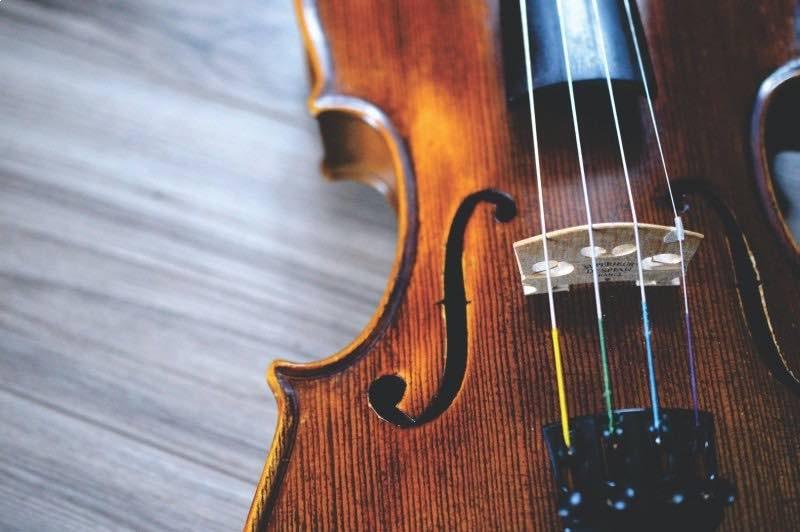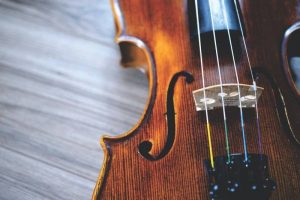If you’re wondering about the ins and outs of violin instrument care, then well done. By caring for your violin, you can help to ensure your instrument lasts a lifetime, and that your learning experience is more positive than ever.
Violins have been in existence for many years, centuries in fact. Some of the greatest violins made in the early 18th century by makers such as Guarneri and Stradivarius are still being performed on today. However, in order for violins to withstand the test of time they must be well maintained and looked after. Much of this maintenance can be done by ourselves at home but, occasionally, we may need to take the instrument to a good luthier, someone who makes stringed instruments, for more significant repairs or adjustments.
Remember, Violins Are Made from Organic Materials
A violin is made from different types of wood. Spruce is commonly used along with maple and willow and the fingerboard is likely made from ebony or rosewood all held together by glue and covered in varnish. It is interesting to note that many believe Stradivarius had a secret ingredient in his varnish which helped to produce the beautiful tone. Some research has been done using modern scientific technology and we now know that in fact there was no secret ingredient; he was simply a master at using ingredients available to all.
All of these organic materials that go into the construction of a violin are likely to be affected by atmospheric conditions such as heat, cold, and humidity. I know from personal experience, particularly when performing outdoors, how the weather can change the sound and intonation of a violin. It is essential to avoid extremes of temperature if at all possible even when storing the violin. Never, ever leave the violin for example in a hot car for several hours.
How to Store Your Violin
When storing your violin please be sure to use a hard case. If you are renting or buying a beginners’ violin from an instrument shop a case will likely be included. However, for more advanced students who are considering a top quality violin, you must also consider a top quality case. Cases come in a variety of shapes, sizes and budgets.
My own personal case was imported from England by one of the leading manufacturers in the world, T.A.Timms and Son. You may not need to go to such lengths, but please be sure to get a strong, sturdy case to prevent accidental damage. When putting the violin in its case after a hard practice session, make sure you loosen the bow hair and remove the shoulder rest if you use one.
Wipe Down Your Violin With a Soft, Dry Cloth
As I mentioned earlier, the violin is made from wood, so it’s very important that you wipe down your instrument after you finish playing. Use a soft, dry cloth to remove any rosin that will have accumulated on the strings as well as the top of the violin and the fingerboard. Sweat from your hands needs to be cleaned off too as this can erode the violin over many years. Never use water or any type of regular furniture polish. I recommend a violin cleaner made by W.E. Hill. It’s relatively inexpensive and most good violin shops should carry it. You are unlikely to need it often as long as you wipe down the violin every time you finish playing.
What To Do When You Need Repairs
Some repairs and adjustments might need to be done by an experienced luthier.
For example, do you find that your pegs stick or don’t turn smoothly? A little trick that you can try is to remove the peg and rub it with the tip of a pencil. The graphite should help the peg turn more easily. Sometimes you may find the peg turns too easily or is loose. In which case you may need a luthier to reshape the pegs. If you look inside the violin you will see a sound post. This can sometimes get dislodged or knocked over a little. Again, this type of adjustment is best left to the luthier who will also take care of any cracks or seams opening up.
Replacing the Violin Strings
Eventually the strings will need to be replaced. For beginners, they will likely last many, many months or until one breaks. Many centuries ago strings were in fact made from sheep intestines. Nowadays they are made from either a gut or synthetic core such as perlon wound with metal. Sometimes this metal can unwind, so obviously an immediate replacement would be required. The tone quality can also deteriorate over time and the experienced ear will know when to change the strings.
The strings are stretched over the bridge. This can cause the bridge to warp or bend and sometimes tilt forward. Be sure to check the bridge every time you play. It should be absolutely straight and lie at 90 degrees to the top of the violin.
Of course, the bow needs a little maintenance too. Always wipe the wood of the bow with that soft, dry cloth being sure to remove rosin dust and sweat from your hands. Try to avoid touching the hair with your fingers. The bow should be rehaired periodically. For beginners the hair will likely last maybe a year or two. However, for more advanced students and professionals a rehair may be necessary every six months or so.
Violin Instrument Care Can Help Ensure Lasting Performance
If your violin and bow are well maintained and looked after, they should last a lifetime. I have owned my 200 year old violin for over 40 years, and it still looks and sounds wonderful.
Steve Merson


